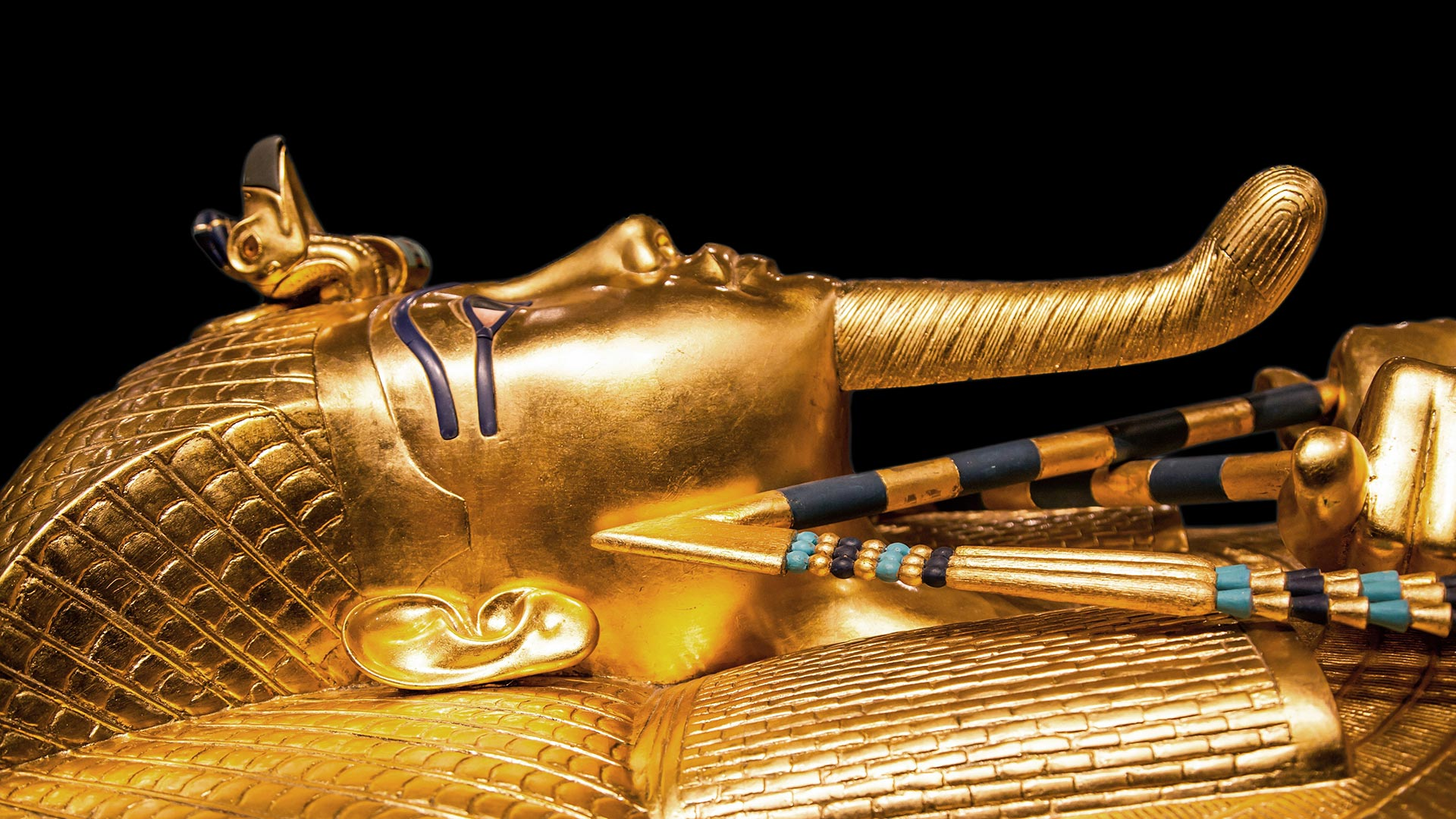
The discovery of Tutankhamun’s tomb in 1922 by British archaeologist Howard Carter is one of the most significant events in the history of archaeology. The boy king, who ruled Egypt during the 18th Dynasty (circa 1332–1323 BCE), was largely forgotten by history until his nearly intact tomb was unearthed in the Valley of the Kings. The treasures found within provided an unprecedented glimpse into the life, death, and beliefs of ancient Egypt. This exploration delves into what we know about Tutankhamun, the treasures of his tomb, and their historical and cultural significance.
The Life and Reign of Tutankhamun
Tutankhamun, often referred to as King Tut, ascended to the throne at the age of nine or ten and ruled for approximately nine years. His reign was relatively short and unremarkable in terms of political achievements, but it occurred during a tumultuous period in Egyptian history.
-
Historical Context:
-
Tutankhamun was the son of Akhenaten, the “heretic king” who introduced radical religious reforms, including the worship of the sun god Aten over the traditional pantheon.
-
Upon becoming pharaoh, Tutankhamun reversed his father’s reforms, restoring the worship of Amun and other gods and moving the capital back to Thebes.
-
His reign marked a return to traditional Egyptian religion and culture, earning him the name Tutankhamun, meaning “the living image of Amun.”
-
Death and Legacy:
-
Tutankhamun died unexpectedly at around 18 or 19 years old. The exact cause of his death remains a mystery, with theories ranging from illness to injury.
-
His untimely death likely contributed to the hasty preparation of his tomb, which was smaller and less elaborate than those of other pharaohs.

The Discovery of the Tomb
Howard Carter’s discovery of Tutankhamun’s tomb (KV62) on November 4, 1922, captivated the world. Unlike many other royal tombs, which had been looted in antiquity, Tutankhamun’s burial chamber was remarkably intact.
-
Key Details:
-
The tomb contained over 5,000 artifacts, including furniture, jewelry, weapons, clothing, and chariots.
-
The most famous artifact is Tutankhamun’s golden death mask, an exquisite masterpiece of ancient craftsmanship.
-
The discovery provided invaluable insights into the burial practices, art, and daily life of ancient Egypt.
-
The Treasures of Tutankhamun
The treasures found in Tutankhamun’s tomb are unparalleled in their richness and variety. They reflect the wealth and artistry of the New Kingdom period and the religious beliefs surrounding death and the afterlife.
1. The Golden Death Mask
Tutankhamun’s death mask is one of the most iconic artifacts from ancient Egypt.
-
Description:
-
Made of solid gold and inlaid with semi-precious stones, the mask depicts the young king with a serene expression.
-
It weighs approximately 10.23 kilograms (22.5 pounds) and is adorned with symbols of protection and divine authority, such as the vulture and cobra (representing Upper and Lower Egypt).
-
-
Significance:
-
The mask was designed to ensure Tutankhamun’s safe pᴀssage to the afterlife and to protect his spirit.
-
2. Funerary Objects
The tomb contained a wealth of items intended to accompany the king in the afterlife.
-
Examples:
-
Canopic Shrine and Jars: Used to store the king’s internal organs, protected by the four sons of Horus.
-
Shabti Figures: Small statues meant to serve the king in the afterlife.
-
Chariots and Weapons: Symbolizing Tutankhamun’s role as a warrior and leader.
-
3. Personal Belongings
The tomb also included items that reflected Tutankhamun’s daily life and interests.
-
Examples:
-
Game Boards: Suggesting the king enjoyed leisure activities.
-
Clothing and Jewelry: Including ornate necklaces, bracelets, and sandals.
-
Perfume Containers: Highlighting the importance of personal grooming and luxury.
-
Scientific Insights from the Tomb
Modern technology has allowed researchers to study Tutankhamun’s remains and artifacts in greater detail, revealing new insights into his life and death.
-
Health and Genetics:
-
DNA analysis has shown that Tutankhamun suffered from multiple health issues, including malaria and a club foot.
-
He likely had a weakened immune system due to genetic disorders caused by inbreeding within the royal family.
-
-
Cause of Death:
-
While the exact cause of death remains uncertain, studies suggest he may have died from complications of a broken leg or an infection.
-
Cultural Impact of the Discovery
The discovery of Tutankhamun’s tomb had a profound impact on both archaeology and popular culture.
-
Archaeological Significance:
-
The find sparked a renewed interest in Egyptology and inspired further excavations in the Valley of the Kings.
-
It provided a wealth of information about ancient Egyptian burial practices and craftsmanship.
-
-
Popular Culture:
-
Tutankhamun became a global sensation, with exhibitions of his treasures drawing millions of visitors worldwide.
-
The “curse of the pharaohs,” a myth surrounding the deaths of some individuals ᴀssociated with the tomb’s discovery, added to the legend of King Tut.
-

Conclusion: A Legacy of Wonder
Tutankhamun’s tomb and its treasures offer a unique window into the life and afterlife beliefs of ancient Egypt. While the boy king’s reign was brief and his historical impact limited, the discovery of his tomb has immortalized him as one of the most famous pharaohs in history. The treasures of Tutankhamun continue to captivate and inspire, reminding us of the enduring allure of ancient Egypt and the mysteries that still lie buried beneath the sands of time.